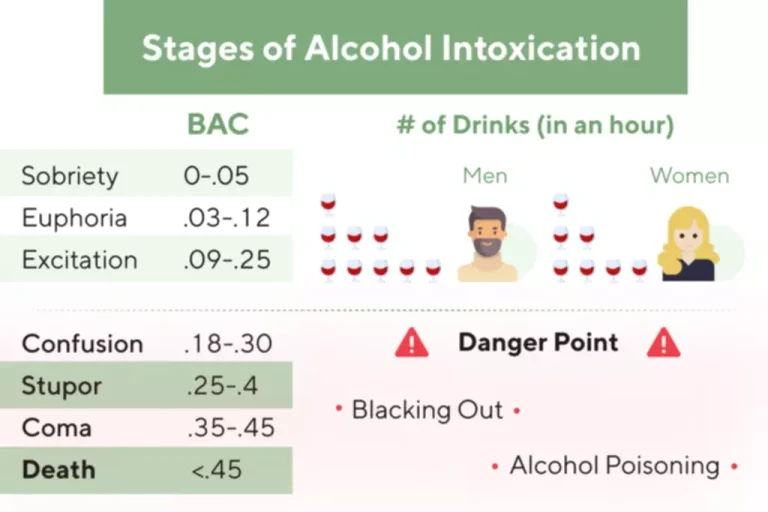
These events depend on the activation of the nuclear factor kappa B (NFκB) heterodimer p50–p65 and its translocation to the nucleus leading to the expression and production of pro-inflammatory cytokines such as interleukin (IL)-1β, IL-6, IL-12, and tumor necrosis factor (TNF)-α (Hoffmann, Natoli et al. 2006, Janeway 2008). Often, investigators stimulate with LPS after pre-exposure to ethanol to mimic inflammation observed in trauma patients with high blood alcohol levels and explore the alterations in immunity that lead to frequent subsequent infections among this group. Another aspect of cell-mediated immunity that is affected by ethanol consumption is the delayed-type hypersensitivity (DTH) response. DTH refers to a cutaneous T-cell–mediated inflammatory reaction that takes 2 to 3 days to develop.
Impact of AUD on Lymphocyte Development
- This defective neutrophil recruitment could be partially restored by localized chemokine administration (Quinton et al. 2005).
- In vivo studies in humans confirmed these observations, demonstrating that binge drinking (i.e., consuming 5 to 7 drinks within 90 to 120 minutes) promoted T-cell apoptosis and decreased Bcl-2 expression (Kapasi et al. 2003).
- Impairment in T-cell recruitment also was observed in mouse models of chronic alcohol exposure.
- The epithelial cells function as a physical barrier as well as regulators of the innate and adaptive immunity.
- These cells act as phagocytes—that is, they engulf pathogens and ingest them in a process called phagocytosis.
- HLAs are proteins found on the surface of various cells that present antigens to the TCR on T cells to induce an immune response.
In contrast, chronic alcohol intake can activate the complement response (Roychowdhury et al. 2009), both by inducing the biochemical pathways that lead to activation of the complement cascade and by suppressing processes to terminate or regulate the cascade (Bykov et al. 2007). For example, alcohol suppresses tissue recruitment of PMNs during infection and inflammation, which can lead to increased susceptibility to bacterial infections (particularly pneumonia), decreased removal of invading bacteria (i.e., bacterial clearance), and increased mortality from pneumonia (Zhang et al. 2002). Thus, alcohol interferes with various processes necessary to deliver neutrophils to the site of an infection, such as expression of a molecule called CD18 on PMNs in response to inflammatory stimuli and PMN “hyperadherence” to endothelial cells following appropriate stimulation (MacGregor et al. 1988). In addition, alcohol significantly inhibits PMN phagocytic activity as well as the production or activity of several molecules (e.g., superoxide or elastase) that are involved in the PMNs’ bactericidal activity (Stoltz et al. 1999), so that overall bactericidal activity ultimately is reduced. The innate immune response to a pathogen is followed by an adaptive immune response that is activated only after the body is exposed to the pathogen for the first time and which is specific to that one pathogen. The innate immune response orchestrated by all these components provides the first line of defense against invading pathogens and plays a key role in the activation and orientation of adaptive immunity, as well as in the maintenance of tissue integrity and repair.
Drinking impairs immune cells in key organs
There is evidence in a number of physiological systems that binge alcohol intake complicates recovery from physical trauma (see the article by Hammer and colleagues). Molina and colleagues review research showing that alcohol impairs recovery from three types of physical trauma—burn, hemorrhagic shock, and traumatic brain injury—by affecting immune homeostasis. Their article also highlights how the combined effect of alcohol and injury causes greater disruption does alcohol weaken your immune system to immune function than either challenge alone. “Alcohol has diverse adverse effects throughout the body, including on all cells of the immune system, that lead to increased risk of serious infections,” said Dr. E. Jennifer Edelman, a Yale Medicine addiction medicine specialist. The immune system is typically categorized into the innate and adaptive immune response systems, both of which are essential components in the body’s defense against pathogens.

Effects on B-Cell Development
Studies over the last 30 years have clearly demonstrated that chronic ethanol abuse impairs the functions of both T cells and B cells. Chronic alcohol consumption results in lymphopenia with a loss in circulating T cells and B cells. The decrease in T cells is accompanied by increased homeostatic proliferation, which in turn leads to increased T-cell differentiation, activation, and conversion to the memory phenotype. Impairment in T-cell recruitment also was observed in mouse models of chronic alcohol exposure. Despite reduced B-cell numbers, people with AUD exhibit increased serum concentration of IgA, IgG, and IgE.
Modulation of Immunity by Nutritional Change in AUD
They further are characterized by oddly shaped nuclei with multiple lobes and therefore also are called polymorphonuclear leukocytes (PMNs). These cells act as phagocytes—that is, they engulf pathogens and ingest them in a process called phagocytosis. In addition, they can excrete toxic substances from their granules that can kill pathogens. PMNs produce a host of bacteria-killing (i.e., bactericidal) molecules (e.g., myeloperoxidase, defensins, azurophil-derived bactericidal factors, bactericidal permeability-increasing protein, cationic proteins, gelatinase, and lactoferrin). In addition, PMNs participate in the regulation of the local defense response by releasing signaling molecules called cytokines and chemokines (e.g., tumor necrosis factor [TNF]-α; interleukin [IL]-1β, IL-6, and IL-8; and macrophage inflammatory protein [MIP]-2).
This damage to the permeability of the intestinal membrane allows bacteria and their components to enter the blood tissue, reaching other organs such as the liver or the brain. Although chronic heavy drinking has harmful effects on the immune system cells at the systemic level, this review focuses on the effect produced on gut, brain and liver, because of their significance in the link between alcohol consumption, gut microbiota and the immune system. The dendritic cell (DC), which plays a critical role in T cell activation and initiation of adaptive immune responses, is another innate immune cell affected by ethanol. DCs uptake antigens in peripheral tissues which leads to their maturation, and then travel to draining lymph nodes where they present them to T cells (Janeway 2008).

Within the GI tract, alcohol exposure can also alter the number and abundance of microorganisms present within the microbiome, all of which play an important role in normal GI function. In addition to its adverse effects on GI functioning, the impact of alcohol on the GI https://ecosoberhouse.com/ microbiome can also alter the maturation and functions of the immune system. Chronic drinking — for 12 to 15 years — can lead to a reduction in the number of T cells. Extremely heavy drinking — about 30 drinks per day — can throw off the balance of immune system cells.
Homeostasis-stimulated proliferation drives naive T cells to differentiate directly into memory T cells

Finally, an emerging informatics approach that can piece together these extensive data sets and build a network between the immune response elements, the HPA axis, and the time-course/dose response of ethanol while emphasizing in vivo studies from rodent, non human primate, and humans is urgently required. In addition to direct induction of chemokines and most proinflammatory cytokines by TLR activation, activation of the inflammasome was detected in the liver, brain, and intestine after chronic alcohol use (Orman et al. 2013; Szabo and Lippai 2014). The inflammasome is a multiprotein intracytoplasmic complex that comprises a sensor (e.g., NLRP1, NLRP3, NLRC4, or a protein called AIM2) and adapter molecules (e.g., a molecule called ASC). This protein complex can be activated by a variety of sterile danger signals (Tsuchiya and Hara 2014). Activation of the inflammasomes results in induction of caspase-1, an enzyme needed to form mature secreted IL-1β or IL-18. Recent studies have demonstrated inflammasome activation and IL-1β induction in the liver, brain, and intestine after chronic alcohol administration in mice (Alfonso-Loeches et al. 2010; Lippai et al. 2013a,b, 2014; Orman et al. 2013).










